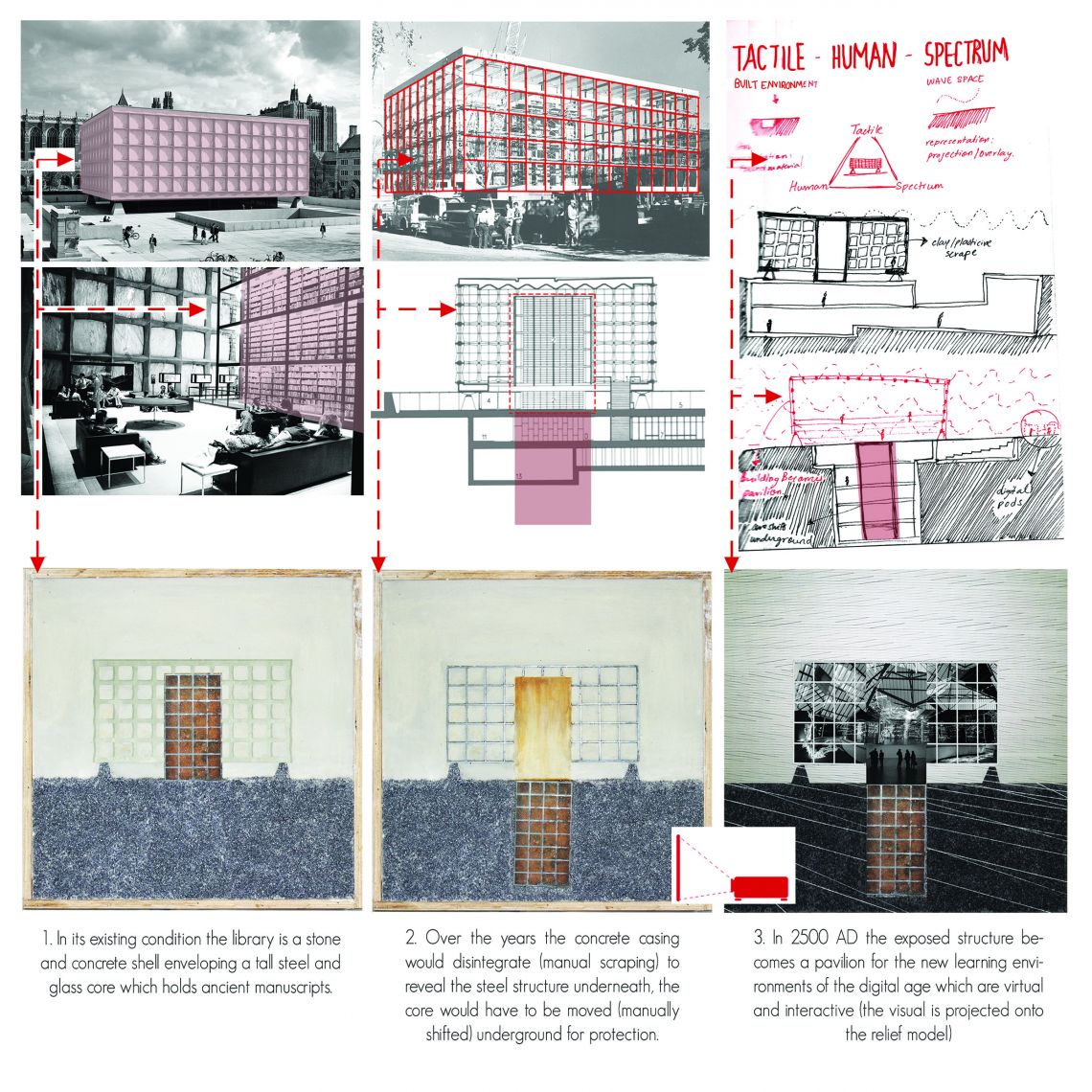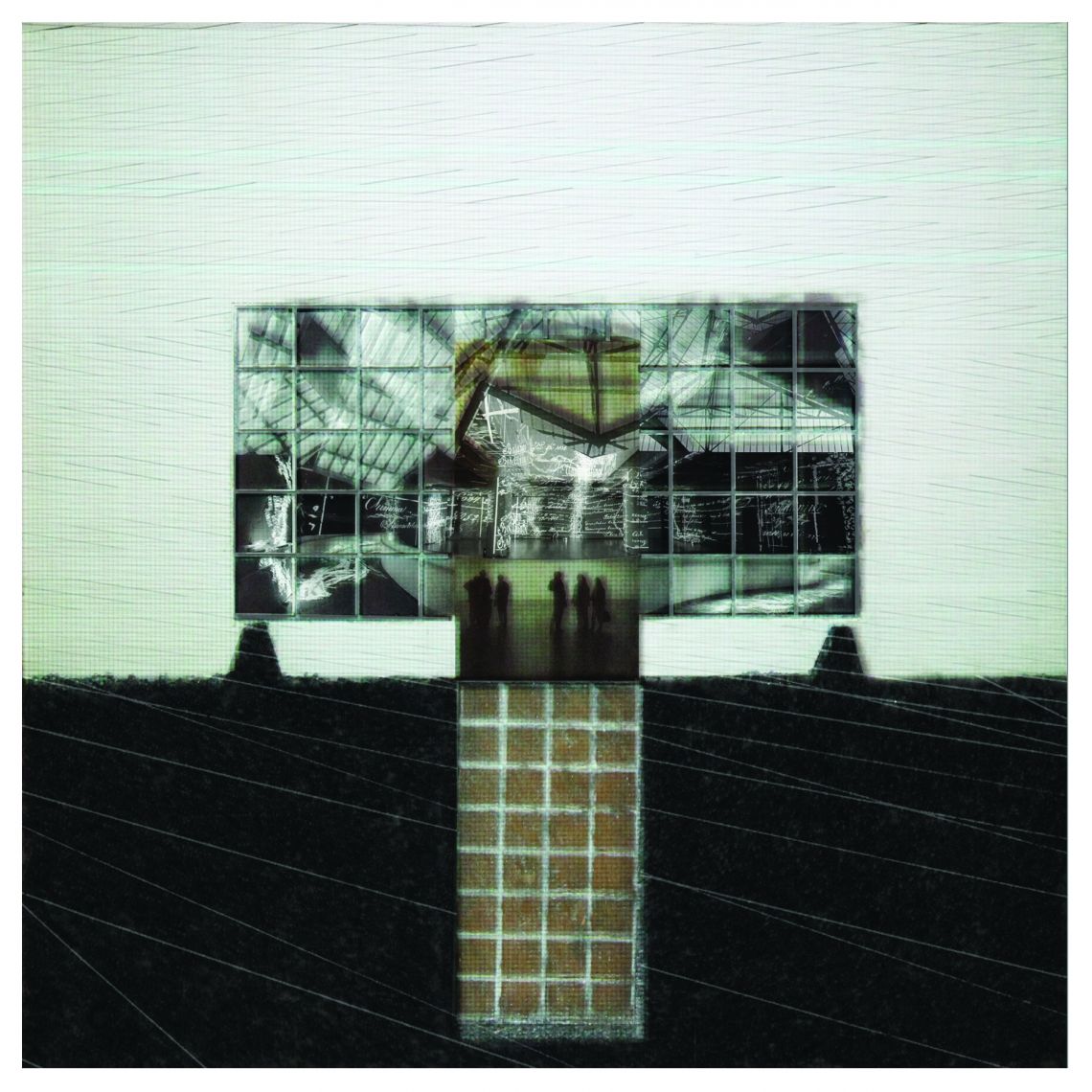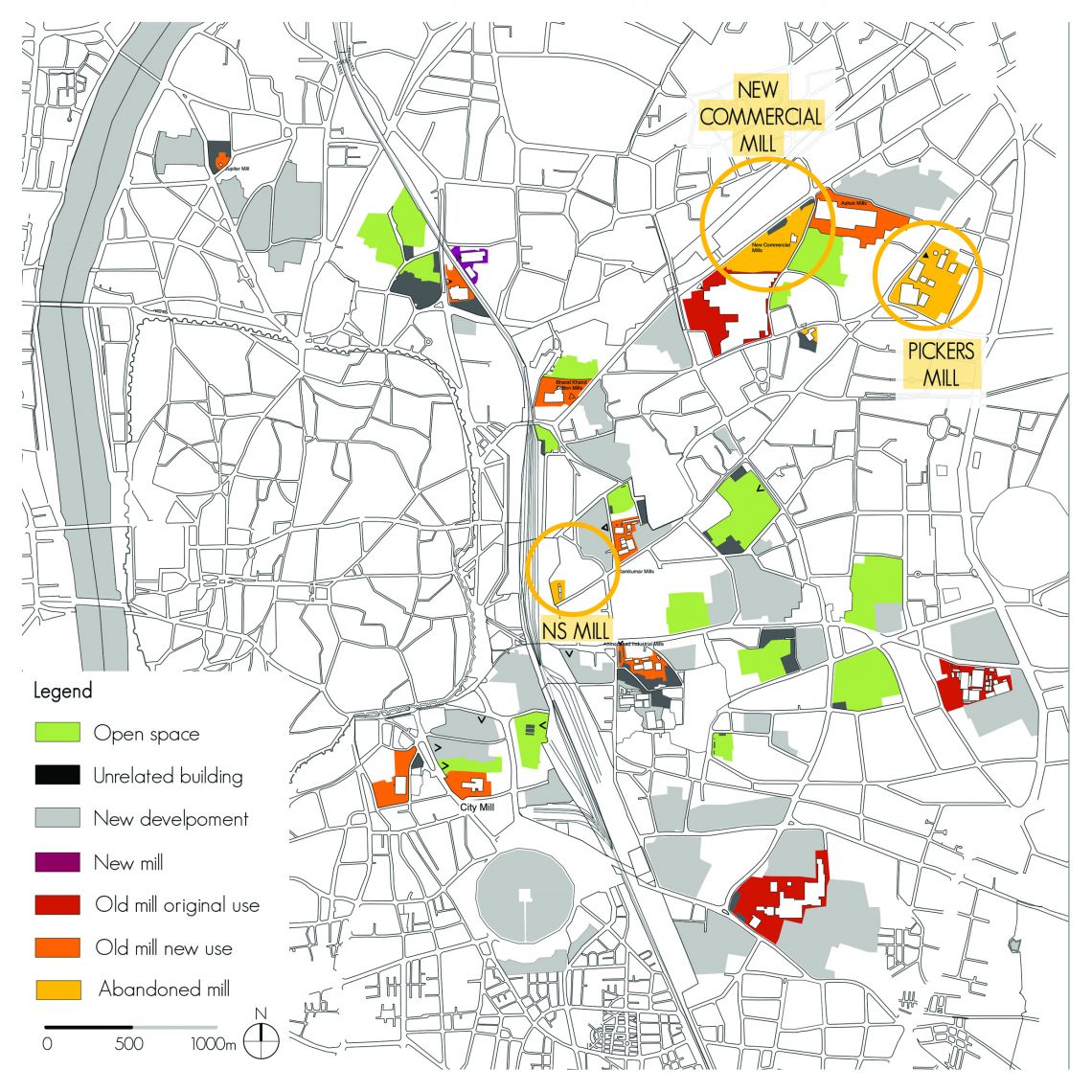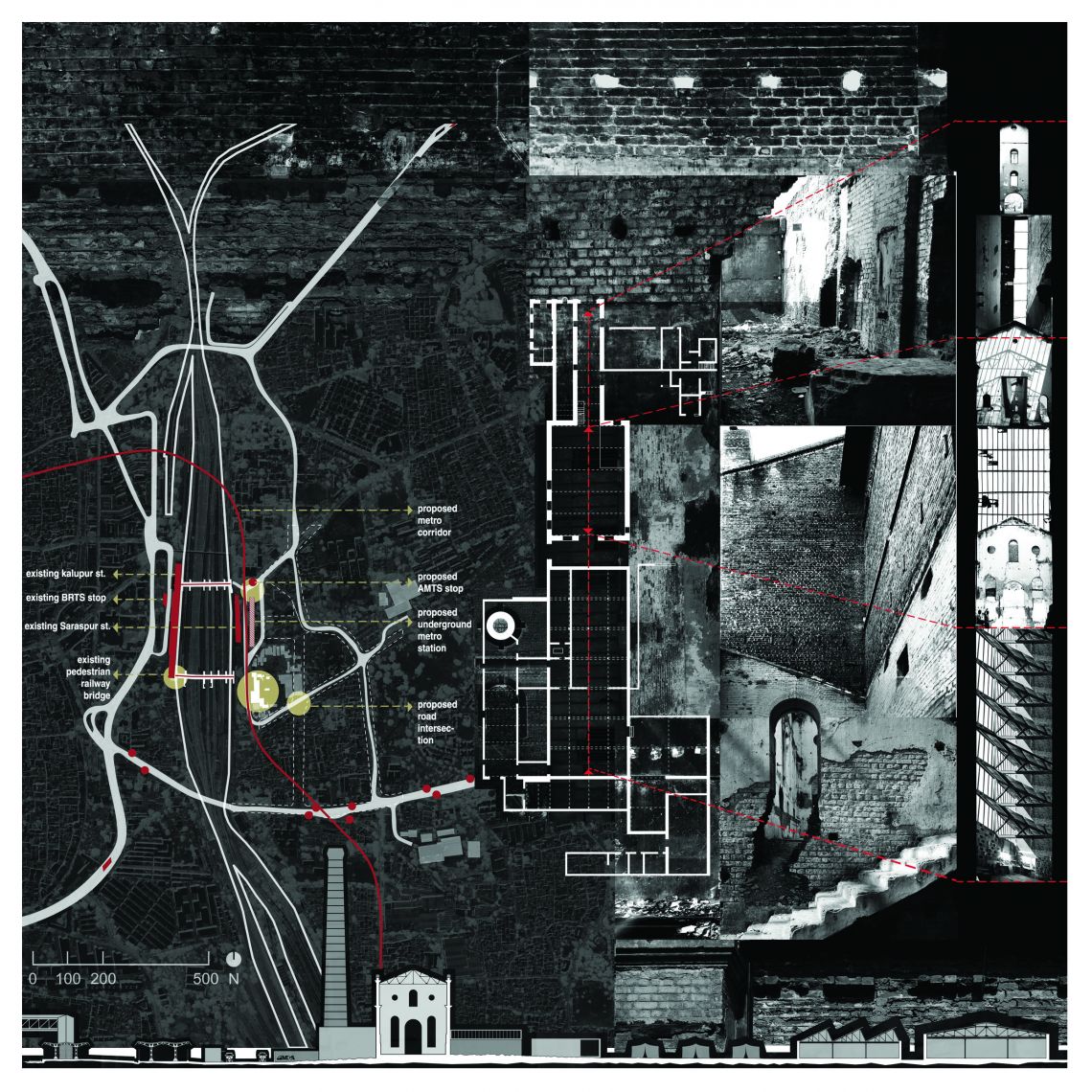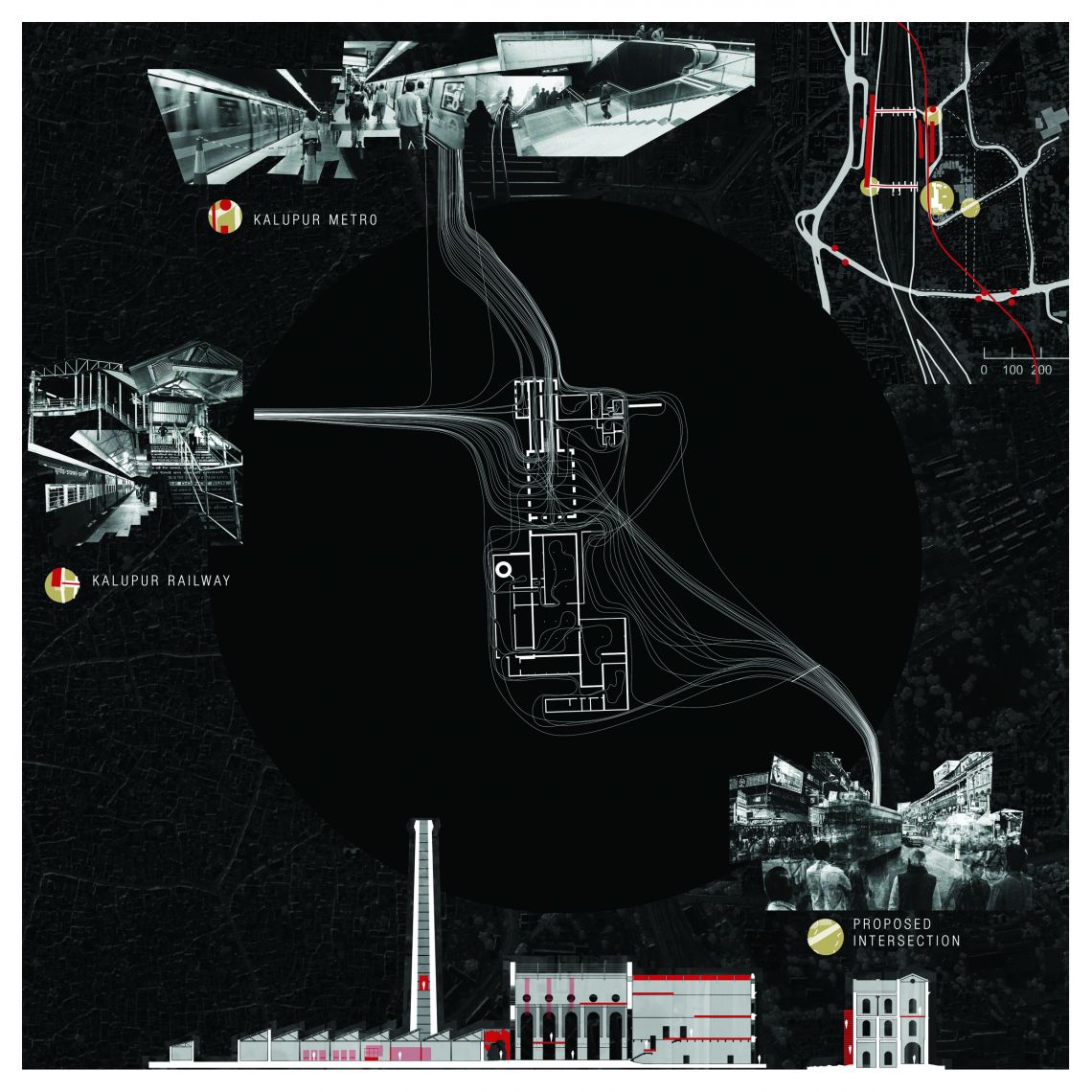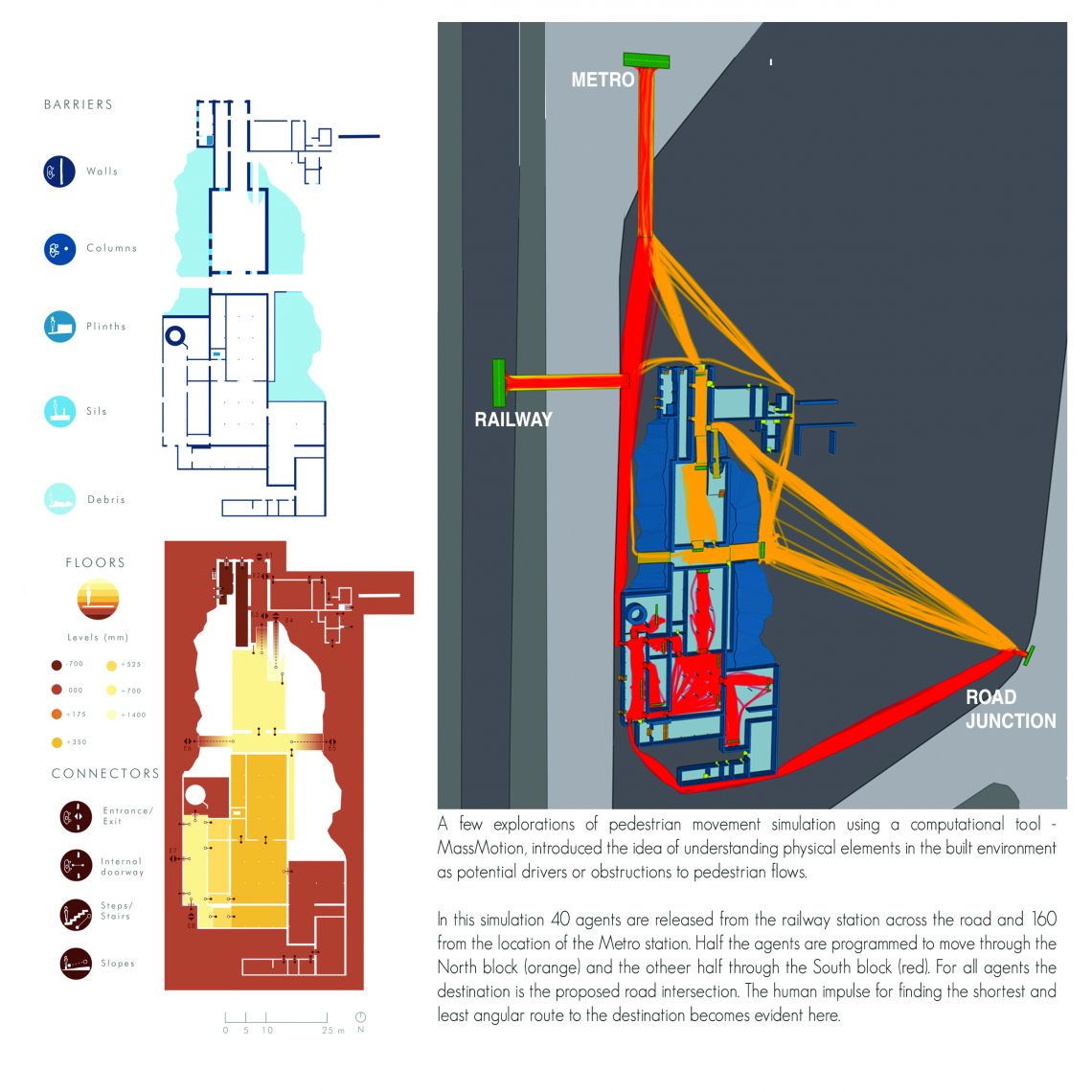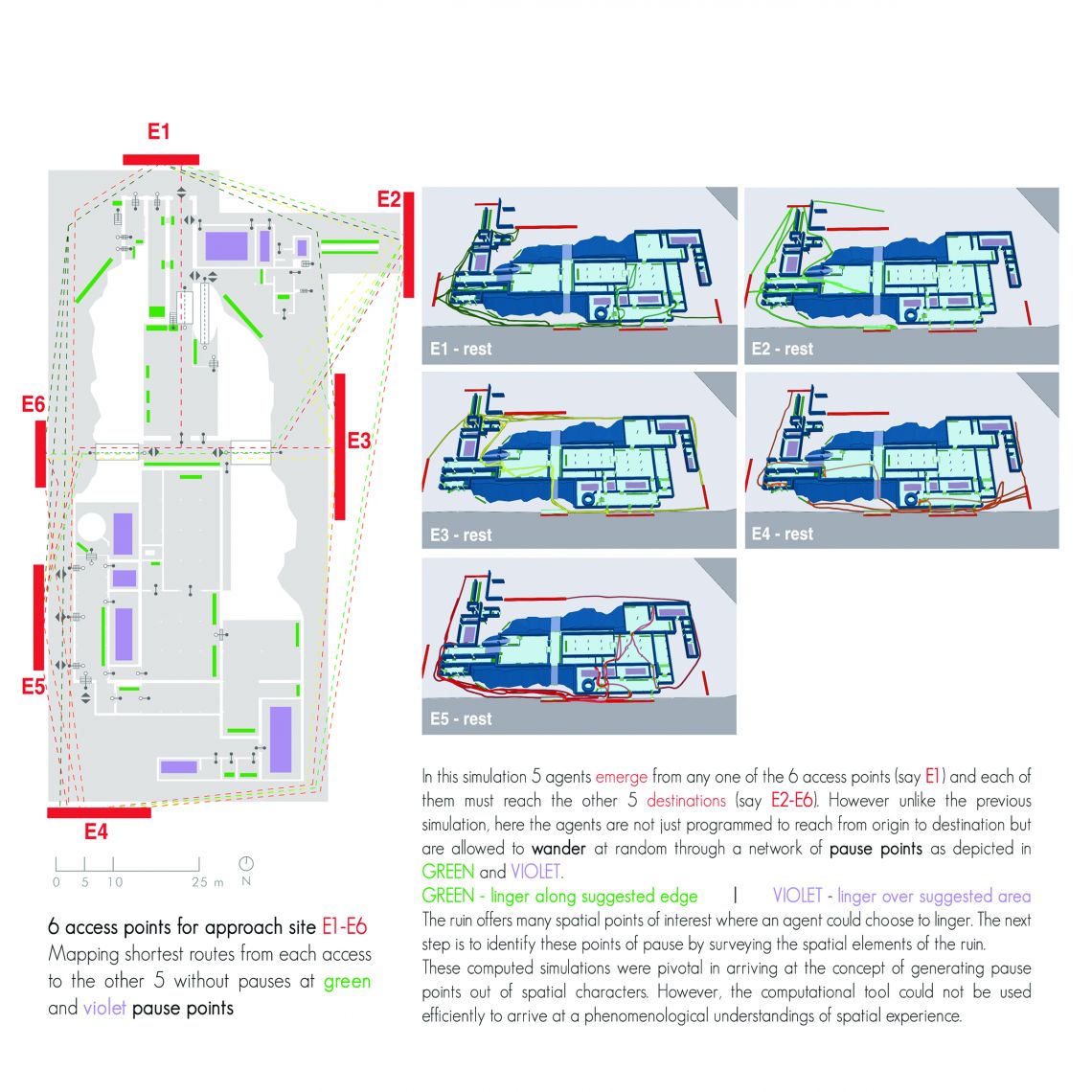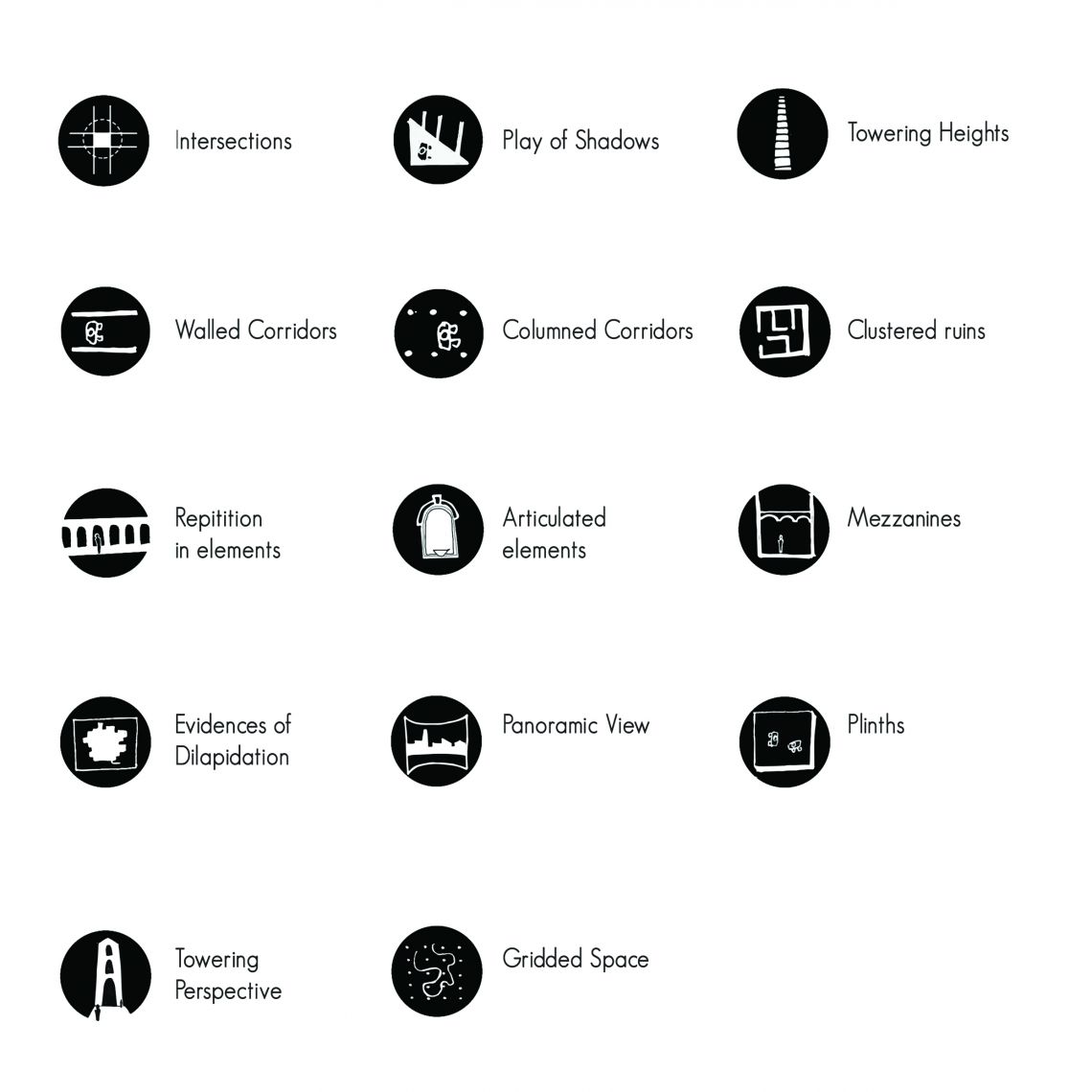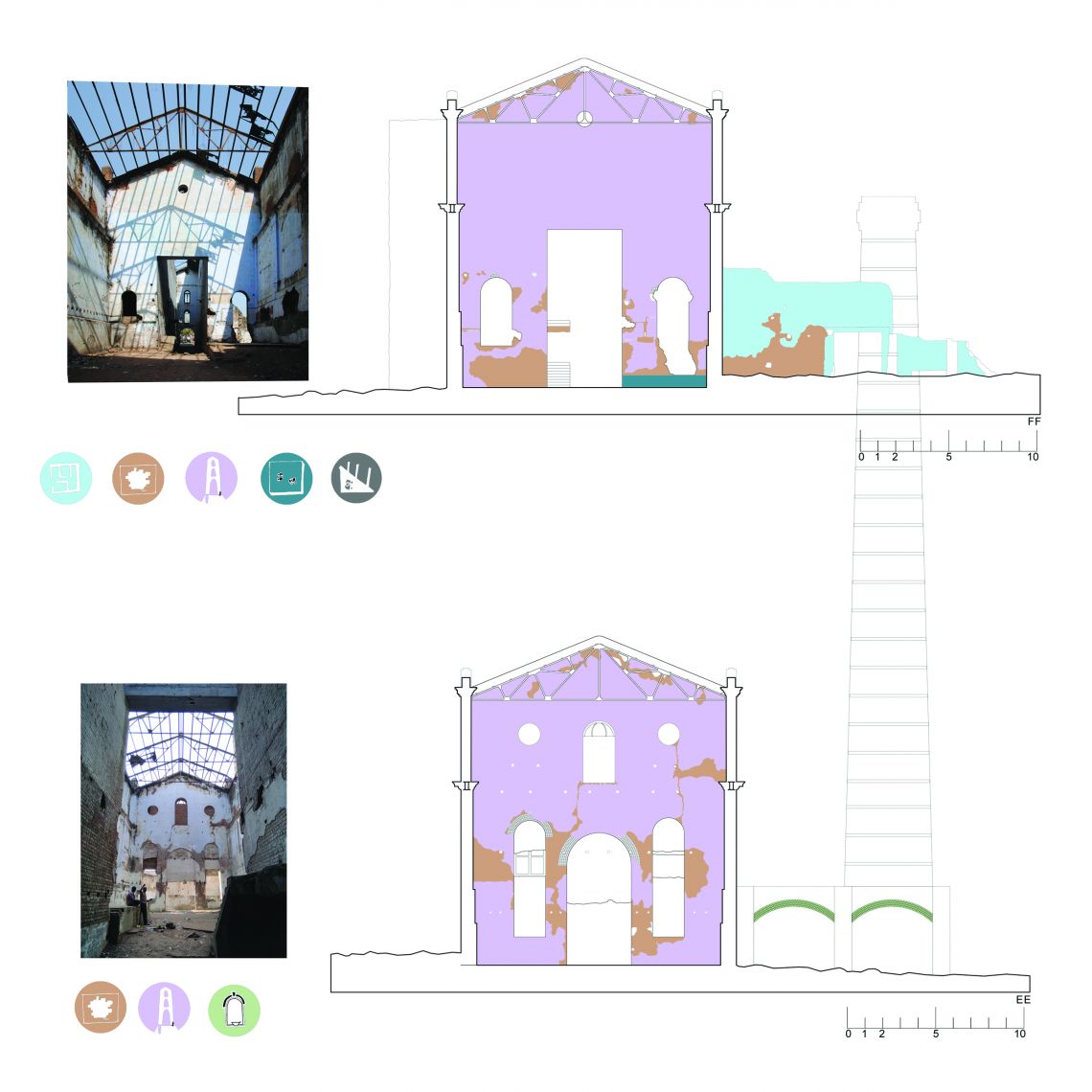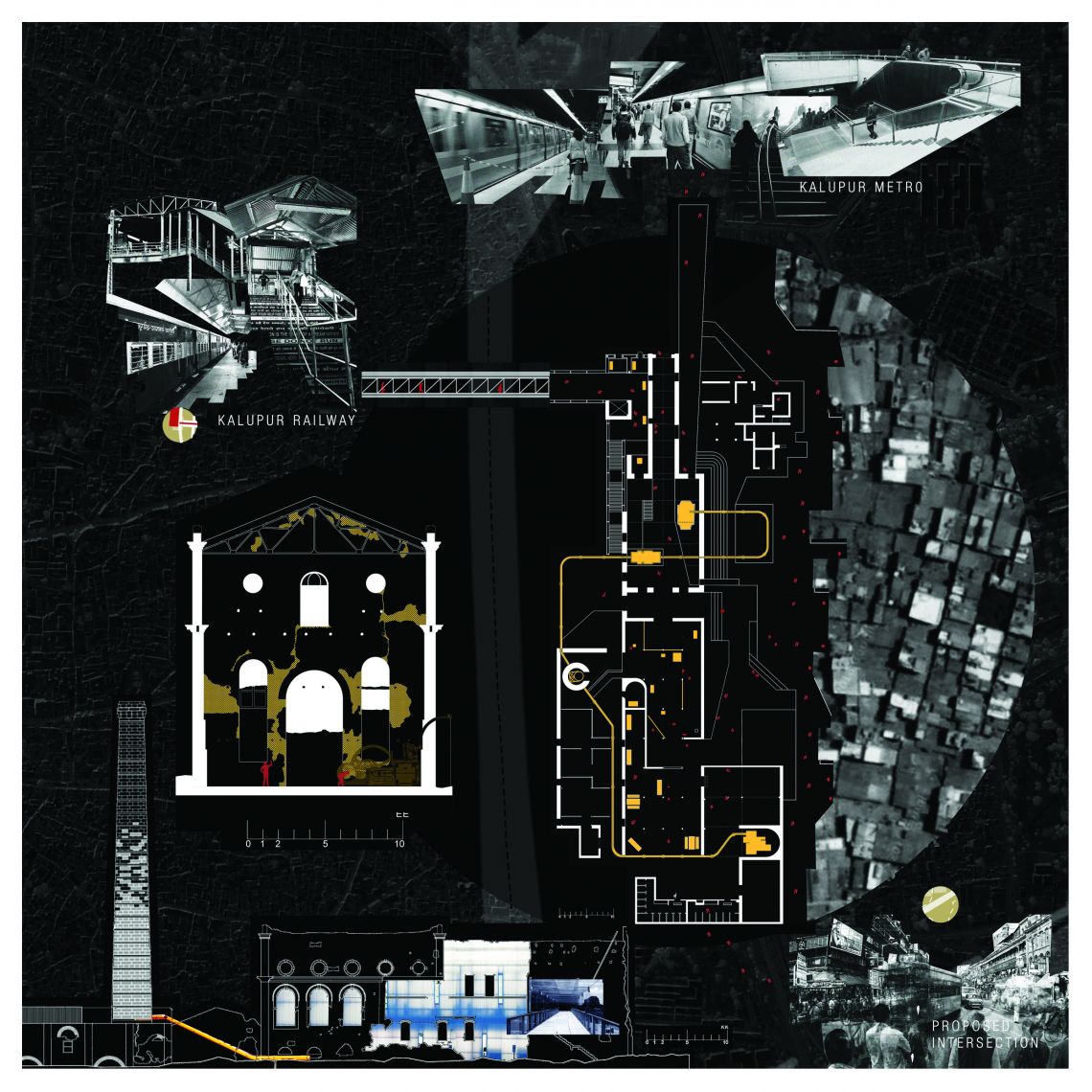Your browser is out-of-date!
For a richer surfing experience on our website, please update your browser. Update my browser now!
For a richer surfing experience on our website, please update your browser. Update my browser now!
In the first exercise, a multi-media collage of a relief model and image projection contemplates the future of Beinecke Library in an increasingly virtual Post-humanist future. The main studio exercise is an exploration of ruined mills of Ahmedabad. After extensive mapping, a dilapidated mill in Saraspur, which sits at the junction of the railway and proposed metro, was chosen. The project explores the potential of the ruin as an urban thoroughfare for busy commuters as well as mnemonic landscape with subtle remnants of the city’s industrial past that offers a moment of pause and contemplation in a chaotic transit environment.
